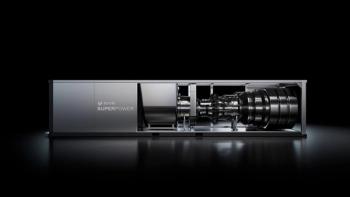
Siemens completes major upgrades on Colombian power plant
Siemens has completed an extensive modernization and upgrade project in Barranquilla, Colombia. This was done for Zona Franca Celsia (formerly Termof lores S.A. E.S.P.), an energy company that provides generation, transmission and distribution via thermoelectric hydroelectric, and solar plants.
The plant on the Caribbean coast began operation in 1993. It is comprised of two combined cycle power plants (CCPP) originally operated by Westinghouse legacy control systems. One plant is a 1×1 CCPP with a Siemens SGT6-3000E (formerly W501D5) gas turbine (GT) and a Mitsubishi ST 1138 steam turbine (ST). The other CCPP is a 2×1 Siemens SGT6-5000FC (W501F) with a Siemens SGT6-3000E GT in combination with a Siemens SST-700-900 ST.
These plants were nearing the end of their lifecycle. Obsolete controls and aging turbines suffered from reduced efficiency, poor startup reliability and declining availability. Turbine trips accelerated the frequency of maintenance.
Turbine issues
Siemens investigated the cause of various turbine issues, low efficiency, and looked at ways to heighten reliability. An engineering study identified improvement opportunities in the auxiliary equipment, control system, and in the operation of the units.
Additionally, Siemens specialists performed a Rotor/Casing Interval Inspection (RCIE) to determine the actual condition of rotors and casings to assess their ability to run beyond the 100,000-hour mark. Celsia considered the option of bringing in new turbines. However, this would have required lengthy outages, which would have led to high periods of unavailability, loss of profits and higher initial costs. The fragility of the local grid necessitated a rapid turnaround. The preferred option was to enhance existing turbines.
Based on engineering assessments, Siemens provided Celsia with an integrated upgrade package consisting of:
• Siemens DF-42 2.0 Inspection Interval Extension Program (IIEP) combustor technology
• Si3D vanes and blades for the SGT6-3000E units
• SPPA-T3000 distributed controls system
• One SGT6 -3000E GT was upgraded with a new bolted compressor rotor design
• Another SGT6-3000E unit was upgraded with a new hydraulic system for the operation of throttle valves and IGVs
• Each SGT6-3000E GT received Siemens’ latest DF-42 2.0 IIEP combustor technology modernization.
The fuel nozzles for the combustor include new features that provide improved fuel and water injection patterns. This results in better control of combustion gas temperature and NOx emissions, as well as eliminating impingement of cooling water on walls of the combustor.
The cross-flame tubes have been redesigned. They now consist of two pieces and incorporate improved materials, coatings and cooling holes. The cross-flame tubes last the same intervals as the other combustor parts. The combustor’s plate-fin design makes more efficient use of cooling air. The original style v-bands and clamps have also been upgraded with advanced bolted combustor couplings which have scalloped bolting f langes and, like the cross flame tubes, have the latest coatings, improved materials, and cooling passages for long life.
The redesigned transition piece reduces stagnation of combustion gas flow and impingement of combustion gas on transition walls. The new transition bolting flange is larger and stiffer, resulting in the elimination of the outer seal.
One of the SGT6-3000E units received a new bolted compressor rotor. This addresses issues experienced after extended operation with the original shrink–fit compressor disk. The new rotor has stacked, bolted compressor discs. It uses design elements from the F-turbine rotor, which allows engine ramp rates of up to 24 MW per minute. It also has visible locking key hardware to facilitate rapid disassembly. This bolted compressor rotor has a 150,000-hour lifespan. Celsia’s existing Siemens SGT6-5000FC+ GT already possessed a bolted rotor. The other SGT6-3000E unit was fitted with a refurbished rotor in 2009 during its second major inspection.
Si3D turbine vanes and blades were installed on both Siemens SGT6-3000E GTs. These blades provided Celsia with a power gain and a heat-rate improvement. The SGT6-5000FC+ GT already used advanced turbine vanes and blades. On-site inspection found them to be in excellent condition.
During this scheduled maintenance window, IIEP parts were installed on the SGT6-3000E units to enhance durability and extend the interval between inspections (hours and starts). Hydraulic throttle valves and inlet guide vanes (IGVs) were also replaced to increase precision and response time.
Control upgrade
The Siemens Power Plant Automation T3000 (SPPA-T3000) System has been implemented for turbine control, boiler control, balance of plant (BOP) and integration of third party systems. This boosted startup reliability and shutdown sequencing, and improved cybersecurity. In addition, the facility benefits from fan-free operation up to a temperature of 140°F.
Celsia can control both power generation blocks from a single platform. Remote diagnostics can be performed either by Celsia or via a Siemens remote monitoring center. This upgrade program boosted efficiency, power output, reliability and availability at Zona Franca Celsia. The combined power boost amounted to 14.24 MW. It exceeded contractual commitments by 170 BTUs/kW-hr.
Adding the enhanced components with better design, material and thermal barriers reduced the trip factor from 20-to-8 equivalent starts per trip at full load. Scheduled maintenance intervals were doubled. With a combined installed capacity of 610 MW, Celsia is said to be the most efficient natural gas plant in the Caribbean area.
Newsletter
Power your knowledge with the latest in turbine technology, engineering advances, and energy solutions—subscribe to Turbomachinery International today.




